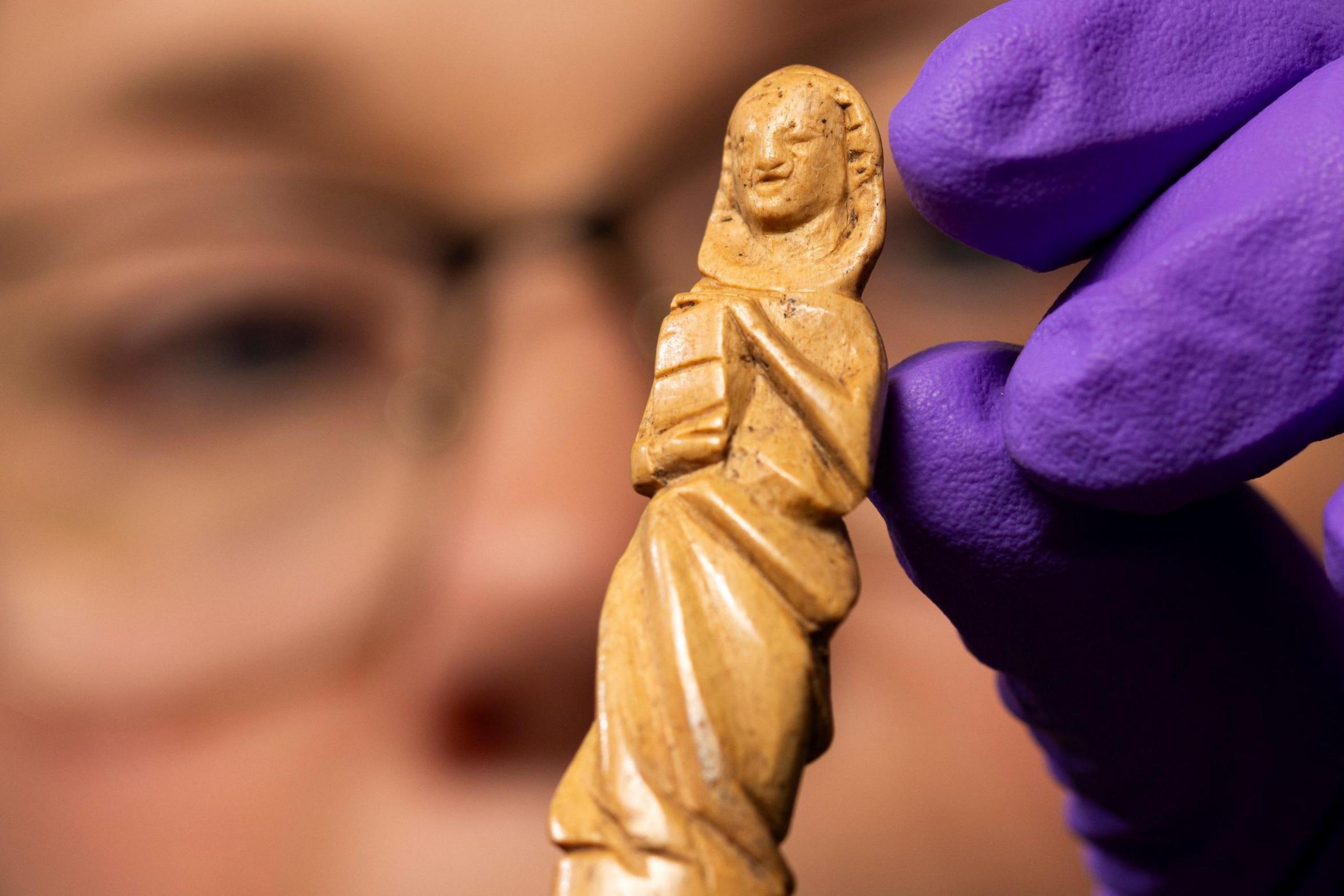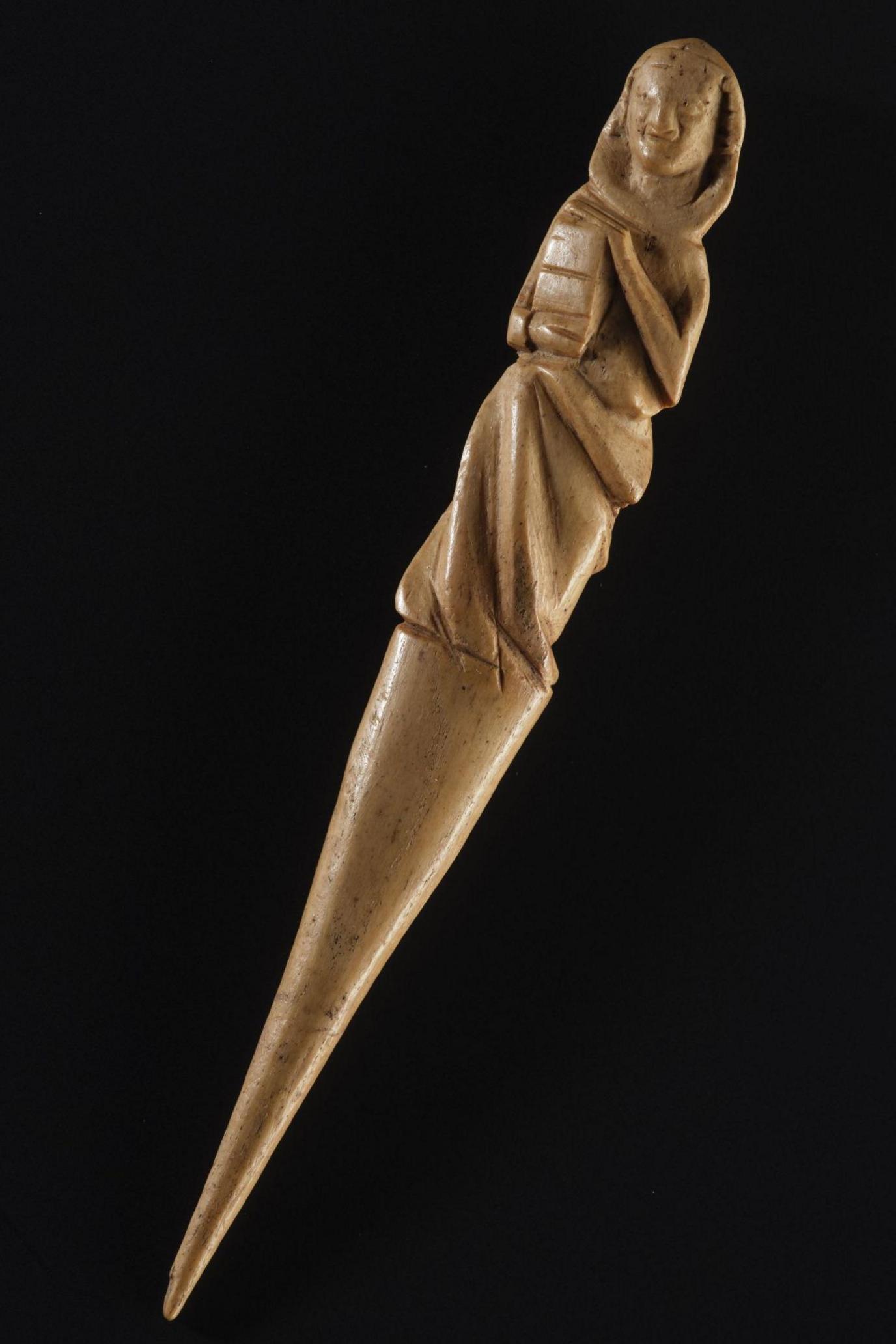'Incredibly rare' medieval hair tool found at Highland castle

The gravoir is of a type that originated in France
- Published
An "incredibly rare" item of medieval high fashion has been uncovered at a Highland castle, say archaeologists.
The hair accessory called a gravoir dates from the 13th Century and was discovered during excavations at Eilean Donan at Dornie, in Kyle of Lochalsh.
Made from red deer antler, the needle-shaped tool was used for neatly parting a person's hair and for creating elaborate hairstyles. What looks like a hooded figure has been carved into the handle.
Dr Alice Blackwell, of National Museums Scotland (NMS), told BBC Scotland News only two other similar gravoirs had been found in the UK, and both were from London.

Eilean Donan is one of Scotland's best-known castles
Eilean Donan Castle was a centre of a medieval Gaelic lordship in the 13th to 15th centuries.
In more recent times, it has been used as a film location, including for 1986's fantasy-adventure Highlander and 1999 Bond movie The World Is Not Enough.
The archaeological excavations were carried out by FAS Heritage.
Brooches and dress pins were excavated alongside animal bones and crucibles – small ceramic cups used to melt copper alloy, silver and gold.
Traces of precious metals found in them suggest that jewellery and personal dress items were being made at the castle.
Dr Blackwell, senior curator of medieval archaeology and history at NMS, said the gravoir would likely have been part of a set that had also included a mirror and a comb.

The gravoir was carved from a red deer antler
She said: "The gravoir would have been used to part hair neatly and help to make elaborate hairstyles - they are incredibly rare objects.
"They originated from France where the fashion for creating elaborate hairstyles seems to have spread through northern Europe around the 13th Century."
Dr Blackwell added: "What's fascinating about the Eilean Donan gravoir is that it shows this connection to continental high fashion, but also rendered in a local material."
She said who the figure was remained a mystery, but it could be the hooded figure of Celtic missionary St Donan.